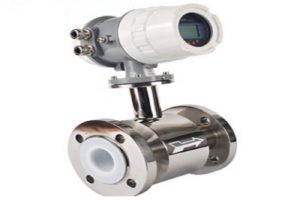Floating solar is also referred to as floating photovoltaic’s or photovoltaics. It is a term used to describe any solar array that is floating on the top of a water body. Solar panels are fixed to buoyant structures to keep them floating on the water’s surface. These solar panels floating on the water are typically found on dams and lakes as they tend to be calmer than oceans.
Floating solar is a green method to generate electricity. It blends renewable and marine energy technologies. The power is transmitted from the floating body via underwater cables to an transmission tower.
An edifice for floating solar panels comprises comprising the module for solar power, anti-rust materials horizontal and vertical frames, buoyancy body footrests for inspection and mounting module. The solar module must be extremely humidity-resistant and dustproof. It should also be lead-free and protected from the water’s effects. The buoyancy is constructed from polyethylene, which can support 2.5 to 2.5 times its weight. This solar floating system design is created by coating magnesium alloy that is very impervious to corrosion.
What is floating solar panel technology? Perform?
Regardless of their location floating solar panels operate in the same manner as traditional land-based systems. But, the inverters and arrays are fixed to a floating platform. Combiner boxes capture direct current electricity that is generated after the generation. After that, it is transformed into alternating current using solar inverters.
Is floating solar a good idea for homeowners?
Unfortunately this technology doesn’t work for homeowners right now. It requires access to a pond or lake and many homeowners do not have. The most effective option is roof and ground-mounted solar.
Where to locate the ideal location for a floating solar system?
A floating solar plant offers numerous advantages, such as conserving land, increasing the power production, protecting the water resources, is easy to maintain, etc. Due to its numerous benefits floating solar power has the potential to grow rapidly both at the home as well as abroad. The location for floating solar power plants is crucial for the entire station. Let’s explore what factors are to be considered when selecting the site in the following.
1. As per Government Planning
The solar floating will be subject to any relevant agreements, including the plans and regulations that are set by the Ministry of Environmental Protection, the State Administration of Forestry, etc.
2. Sunshine Condition
The ideal location of floating solar installations needs the reservoir or lake with vast area and plenty of solar energy resources. In south of China the solar radiation total is usually required as high as 1300 Kwh/ (m2.a) and in the north of China the requirement is to be up to 1400 Kwh/ (m2.a). This means that the sunlight radiation can be different depending on the extensive analysis of costs of electricity and construction in various regions.
3. Surrounding Environment
The environment surrounding the power plant will influence the generation of electricity. It is therefore essential that there’s no shade from trees, mountain and structures on the electricity plant. In addition the capacity of wind loads on the system floating is restricted as well, which means there are demands regarding the wind speed as well as other aspects like snow load, the water level variation, etc.
4. nearby Consumption
The best location for floating solar is typically near reservoirs. It is easy to consume and decrease the loss of transmission.
5. Construction Conditions
The solar modules floating on the surface are to be installed on site and then dragged into the water in the future. It is therefore essential to think about what method of transportation for components is easy and safe to work with water.
Floating solar systems are growing in recognition across the globe. Therefore, choosing the right place for floating solar can have a significant effect on the power generation capacity as well as reducing the cost of construction and increasing the ROI of the project.
How much Replica Air Jordan 4 sneakers cost?
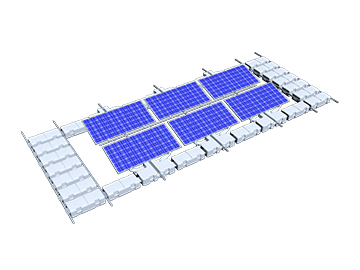
Floating PV Mounting System G5
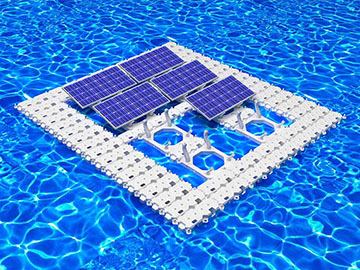
MRac Solar Floating System G4S
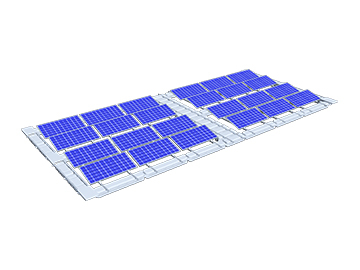
MRac G5A Solar Floating PV System
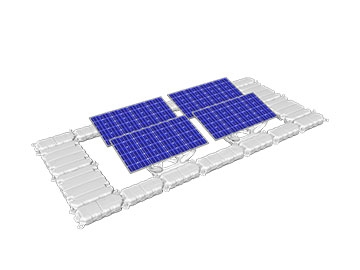
MRac Floating PV System G4N
What are the advantages from floating solar panels?
Other possible benefits include reduced shading, less civil work as well as lower grid interconnection costs as well as reduced water evaporation better water quality and decreased blooming of algal. The potential for expansion of the generation of floating solar power is substantial.
Are solar panels possible to put in the ocean?
Floating solar power stations on lakes have been gaining popularity in recent years, yet there’s been no system capable of installing an entire solar power plant on the ocean.
What are the benefits that come with 3D solar panel?
3D PV technology is also able to increase the efficiency of solar cells by reducing reflection of light. 3D PV technology has the potential to produce much-higher-efficiency PV cells, panels and systems; however, it is still too early to determine what the real-world efficiency will be.
What are the solar trackers that are used for solar paneling?
A solar tracking system can boost the power output of your solar system by allowing your panels in the direction of the sun’s path throughout the day. This maximizes the angle at which your panels are exposed to sunlight.
Are solar panel prints possible?
The ink could be printed on plastic materials, as well as on steel this means the solar panels printed could be integrated in structures. The technology is able to power anything from homes to high-rises.
What are the disadvantages of the use of a solar panel that tracks?
Solar trackers are a little more costly than their stationary counterparts because they are considered to be complicated systems that have moving components. Trackers require more care than stationary systems.
How efficient are solar panels with sun tracking?
Solar trackers can enhance the efficiency of PV systems by 20-40 percent. Trackers let photovoltaic panels follow the sun’s path when it travels through space, which increases solar exposure, and will result in the most efficient energy production.
Which is your most effective solar tracker?
Single-axis trackers are 32.17 percent efficient when compared to an unfixed solar tracker mount. They adhere to their own Sun in a sloping direction from East to West offering an uninterrupted power supply throughout the day. They generate 15 to 16 percent more power per year opposed to static stations that has the same capacity.
What motor is used in the solar-powered tracking device?
Solar trackers use direct-current (DC) motor driver circuit to regulate the motion that the solar panels make. But, traditional DC motor drivers that are used in solar tracking systems don’t provide alternatives for torque and speed control.


